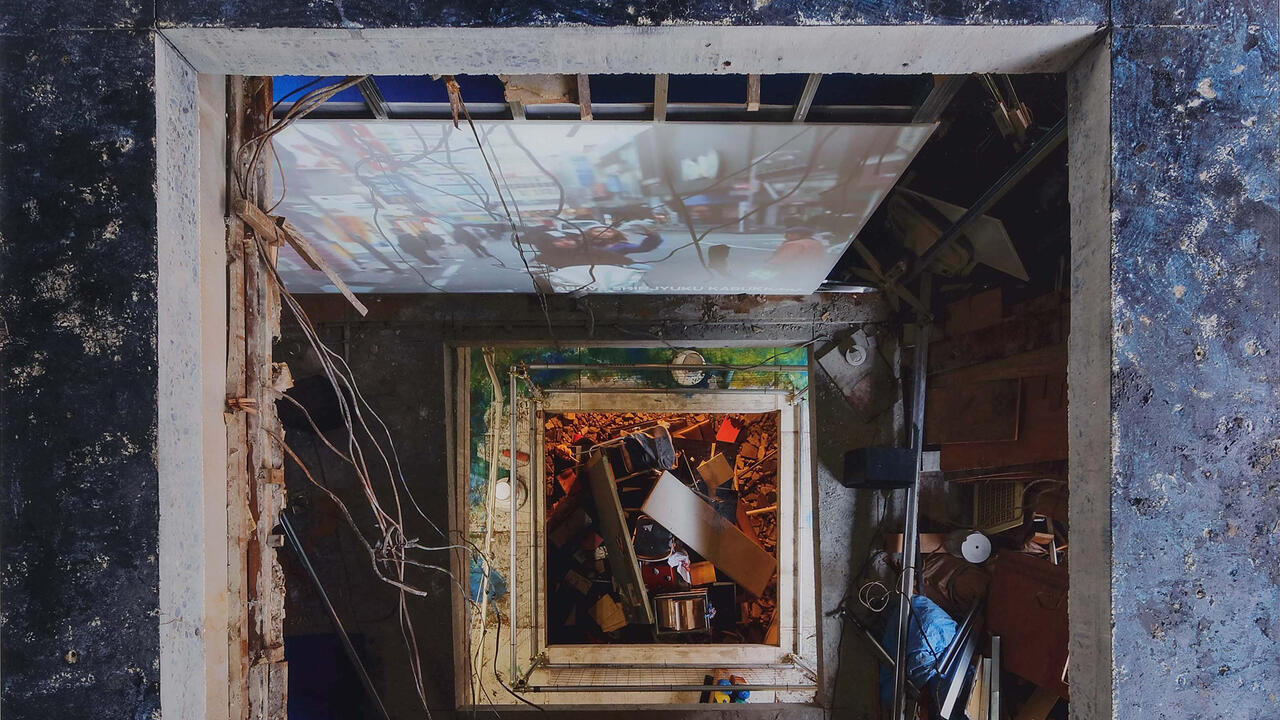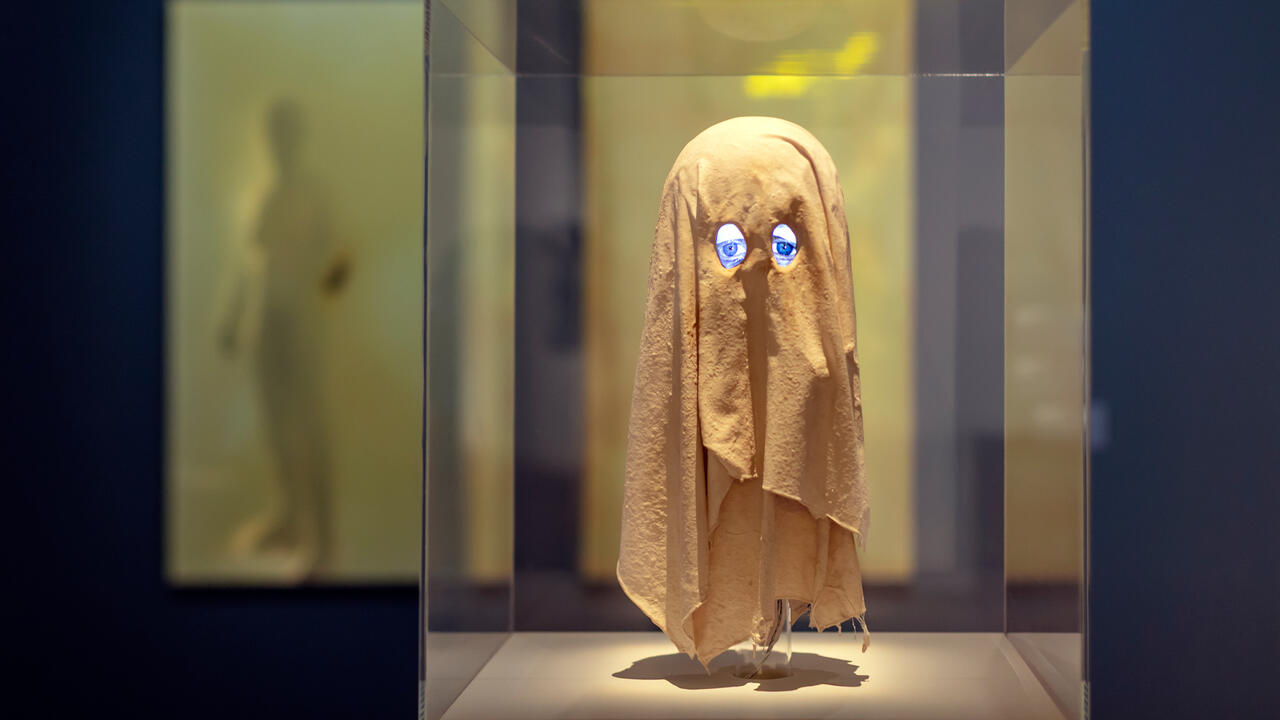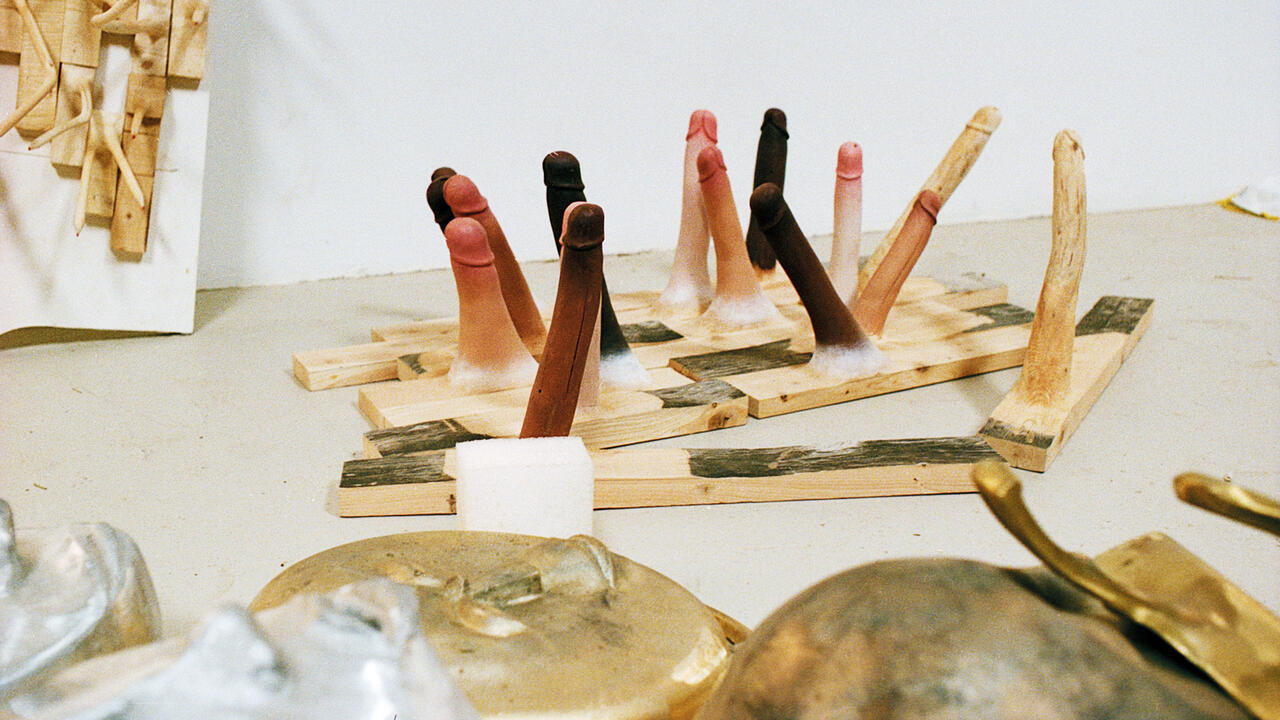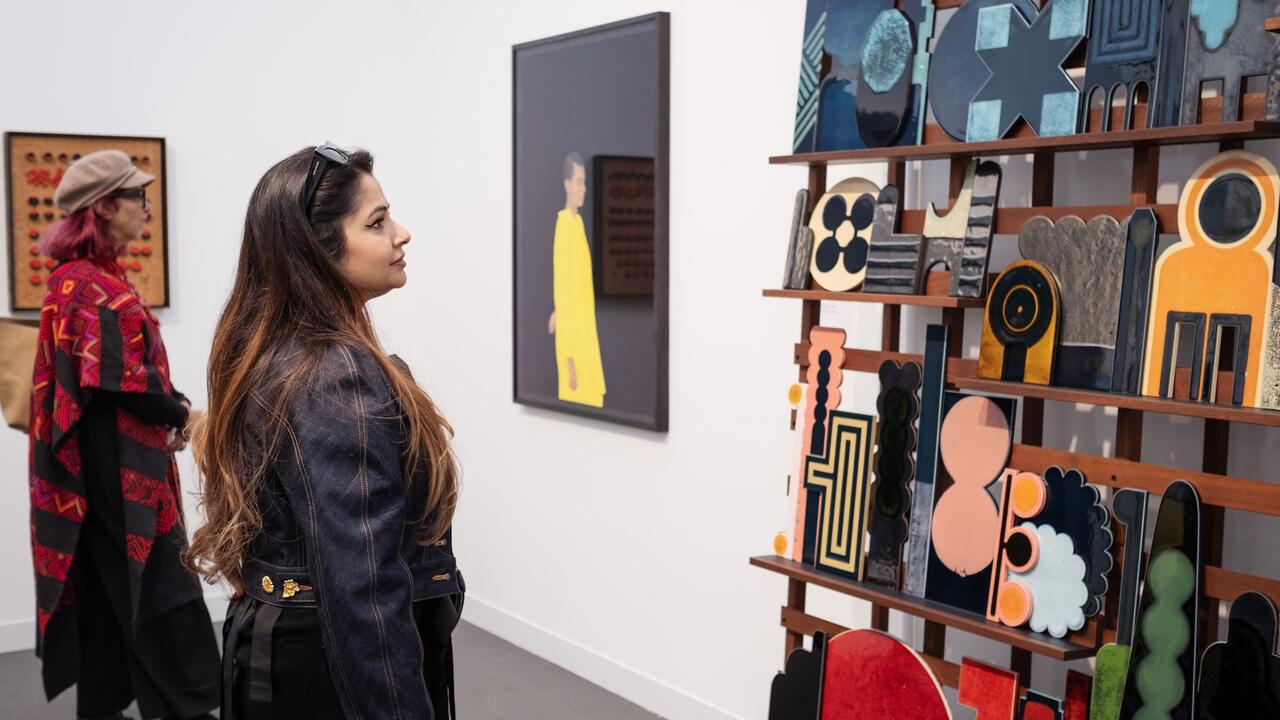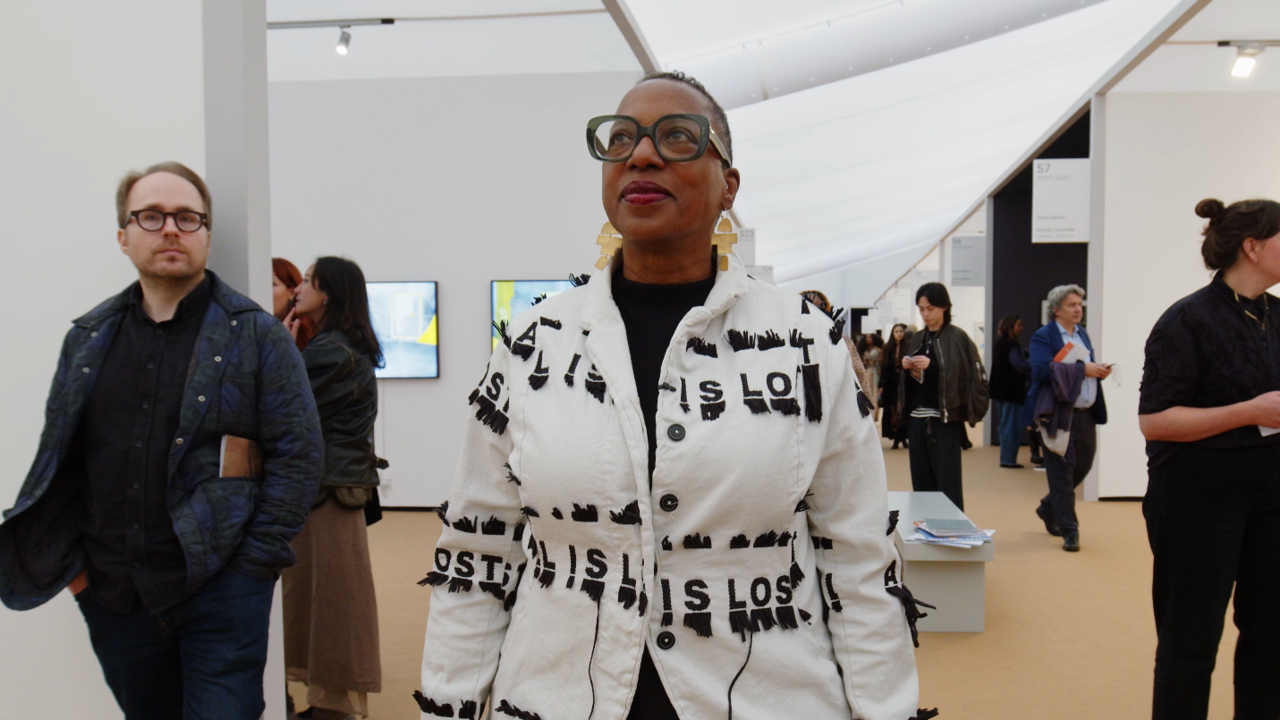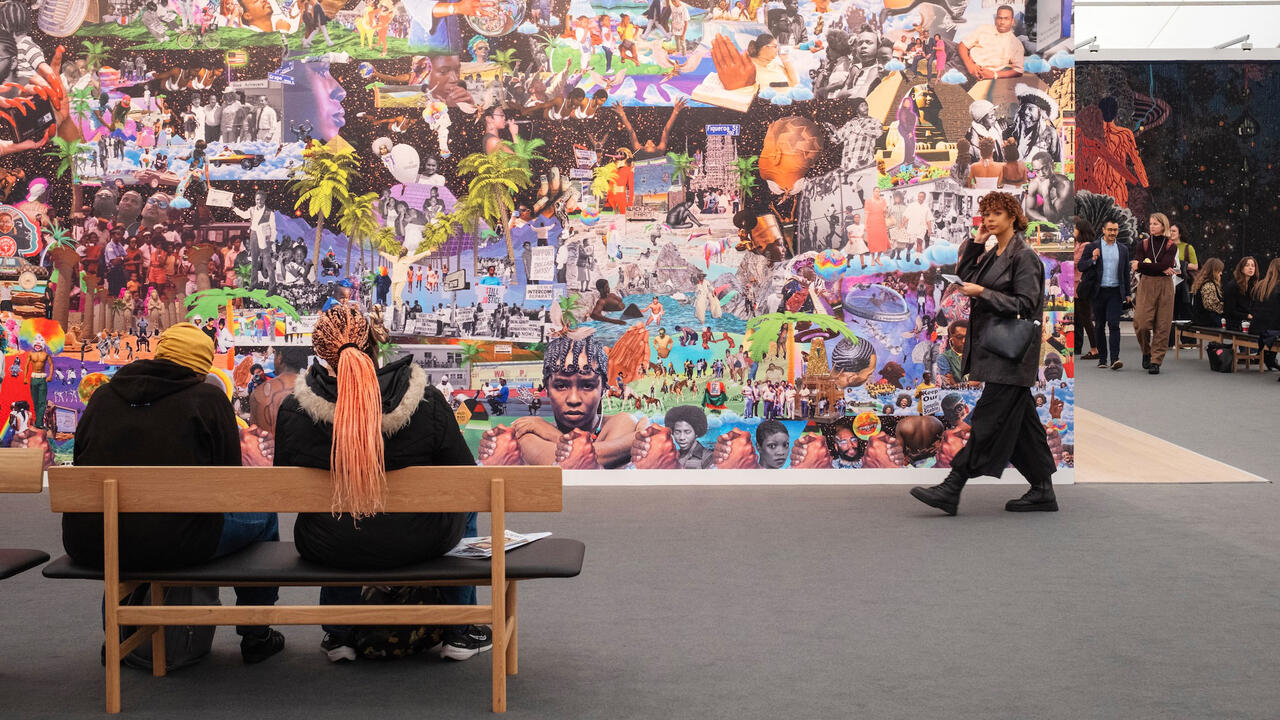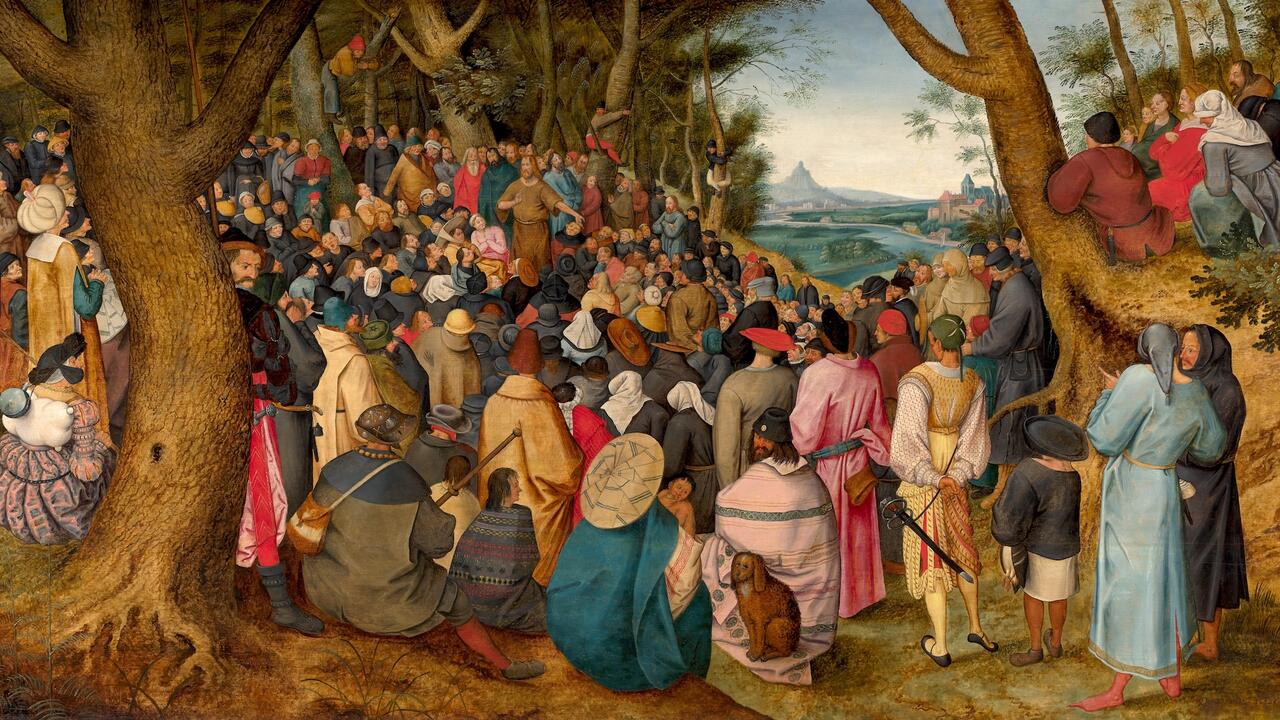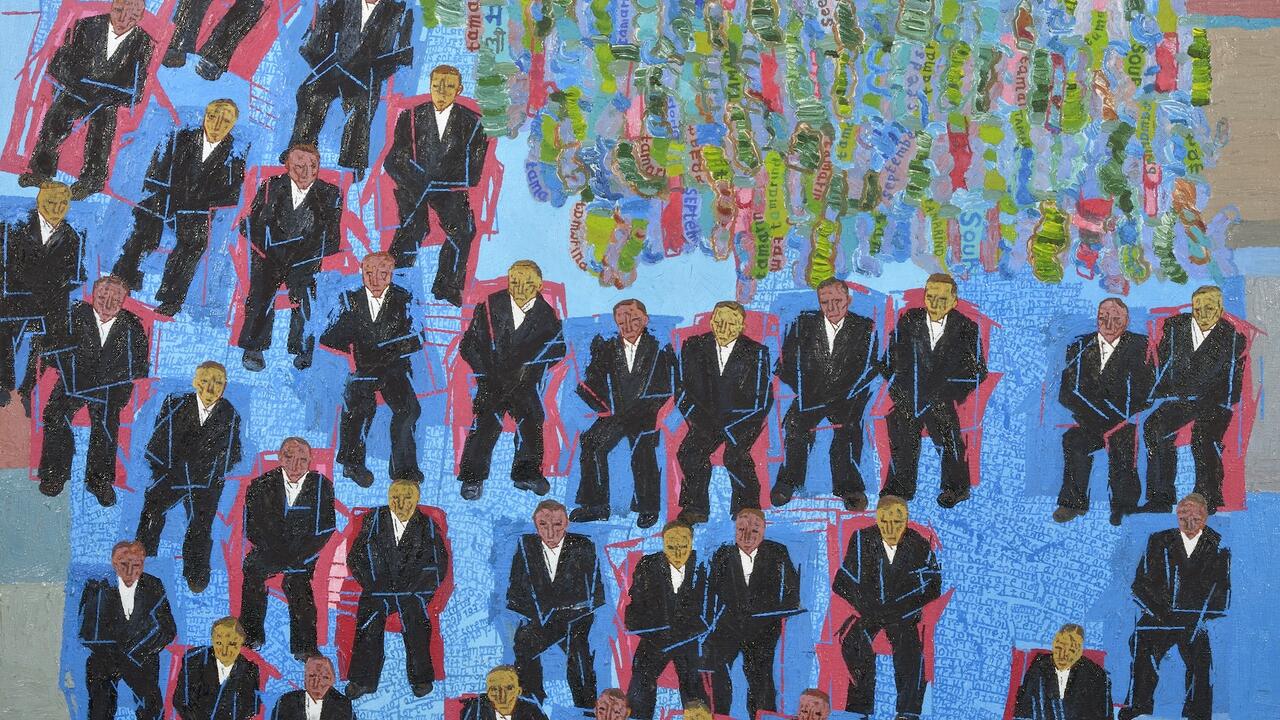Critic's Guide: New Delhi
Ahead of the India Art Fair running this weekend in the capital, a guide to the best shows to see around town
Ahead of the India Art Fair running this weekend in the capital, a guide to the best shows to see around town


Anju Dodiya, 'The Air is a Mill of Hooks'
Bikaner House
8 - 17 February 2018
Slim arrows, hooks, razor-sharp pencils, paintbrushes and fires all reappear in scenes mediated by a dark-haired woman with sharp teeth and jagged eyebrows in Anju Dodiya's paintings on display at 'The Air is a Mill of Hooks'. The title of the show is borrowed from the first line of Sylvia Plath's 'Mystic' (1971), which continues, 'Questions without answer, / Glittering and drunk as flies.' Indeed, the air in Dodiya's paintings is drunk, glittering, and darkly twisted. Born from a long practice of self-portraiture, the woman is Dodiya herself, and her body floats in and out of the painted scenes with a hot fury.
Dodiya changes her material palette frequently: shaped mattresses, wallpaper, and pulpy, unbleached cotton. In The Reader (2017), she is crouched under a chair, gnawing at the corners of an open book. The painting, on a dogstooth mattress canvas shaped into a perfect circle, is characteristic of Dodiya's practice: mischievous, anxious work that is both humorous and pointed.

Zarina Hashmi, 'Weaving Darkness and Silence'
Gallery Espace
3 February –3 March
In 1980, Zarina Hashmi, along with Ana Mendeita and Kazuko Miyamoto, curated 'Dialectics of Isolation: Third World Women Artists of the United States' at A.I.R. Gallery in New York, devising a platform for women of colour in a scene otherwise dominated by masculinity, and whiteness. Hashmi's intersectional approach still continues, enabled by a practice of transnational reach, mobilized not as much by private, institutional networks, but by a long investment in the social.
Hashmi engages a highly formal approach: and a process of abstraction and repetition of gesture is enabled by simple materials like light paper and black ink; small garland-like sculptures made of wood; or woodcuts with repeated motifs of fences, barbed wire, and architectural plans of interlocking courtyards and narrow passages. These are meditations on migration and domesticity that do not slip easily into the nostalgic, nor do they hold onto fixed identities of place.

Riyas Komu, 'Holy Shiver'
Vadehra Art Gallery
2 February –3 March
Riyas Komu has arrived at what is perhaps the logical recourse for a practice that has spent many years preoccupied with representations of Mahatma Gandhi. It is an arrival best described by the triptych Dhamma Swaraj (2017), where three successive panels overlap portraits of Gandhi and Dr. B. R. Ambedkar. The first panel holds Gandhi in louder focus, while gradually moving to the third, where the portrait of Gandhi is overwhelmed by that of Ambedkar. The work is contemporary in a self-conscious way - representative of the fact that critical discourse too, has veered from Gandhi to Ambedkar, yet continues to obsess over a relationship (and comparison) between the two. Komu does not resolve the conceit, but merely presents it: should the two continue to be paralleled? Perhaps the critique is in the commission - one must fade from view for the other to emerge.
Komu works with a variety of medium: woodcut, sculpture, video, and archival print. The work is confrontational, and unresolved; what might be seen as a remote aestheticization of an otherwise active public discourse.

Gauri Gill, 'Acts of Appearance'
Nature Morte
20 January – 27 February
Gauri Gill continues a practice of representing rural, decidedly marginalized communities, by taking us to a village in Maharashtra whose inhabitants pose in various scenes wearing masks of an indigenous craft tradition. A man with a cobra-head carefully weights out onions on scales in his small shop, as packets of shampoo, crisps, and chocolate roll out in garlands around him. A woman in a pistachio-green sari stands under a thatched awning wearing a dark elephant head, the scene dappled by the light caught between the roof's wooden logs. Gill's photographs are formally succinct – sharp, and clearly formed.
The masks are specific to the Konkan tribe of the Jawhar district where, as part of a yearly tradition of mythological reenactment, they customarily depict gods, demons, and figures from popular tales. For this ongoing series Acts of Appearance (2015–ongoing) – a selection of which first made its debut at documenta 14 last year – Gill enlisted the help of a pair of local craftsmen to fashion masks with identities from the contemporary imagination instead, engaging the whole village to witness and participate in the work.

'Turn of the Tide'
Khoj International Artists' Association
12 –24 February
To celebrate the 20th anniversary of Khoj, 'Turn of the Tide' takes a moment to reflect on 21 young practices in the subcontinent. The curatorial frame seems to imply a change in guard, and the growing disquiet of younger voices. The show provides a neat introduction to the current preoccupations of this 'next-geneneration', rife with apocalyptic speculations and political examinations of labour.
Prabhakar Pachpute takes us to a coal mine where an animal/machine hybrid stalks the plains of a grim dystopia, while Sahil Naik's sculptures render a devastated architecture in a meticulous examination of ruin and debris. Pranay Dutta goes over the photographs of an industrial landscape with ink and turpentine and Benitha Perciyal's quietly reflective sculpture of frankincense, made with re-used Burmese teak and brass, is lit to a steady burn. Other artists include: Amshu Chukki, Shreyas Karle, Abir Karmakar, Pallavi Paul, Sahej Rahal, Surabhi Saraf and Sumakshi Singh.
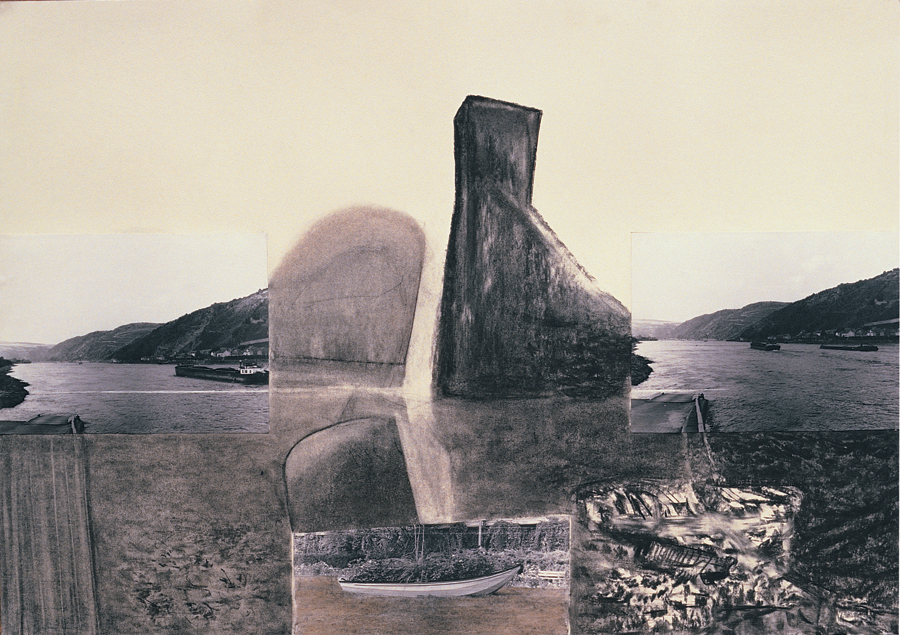
Vivan Sundaram 'Step inside and you are no longer a stranger'
Kiran Nadar Museum of Art
9 February – 30 June
Vivan Sundaram's practice moves easily from pop, to formal modernisms, kitsch, and the highly conceptual. His practice is difficult to define, and as such encapsulates the evolution not only of a single visual language, but nearly half a century of historical and political events.
With more than 180 works on display, this first-ever retrospective is a heady presentation of drawings, paintings, sculptures (both titanic and minuscule), collage, photo-montage, and immersive installation. Sundaram entangles political uncertainties from the Gulf War, to the communal violence of '90s India; alongside deeply personal reflections on bereavement, and tributes to artists like Ramkinkar Baij, Bhupen Khakhar and his aunt, Amrita Sher-Gil. Sundaram is 'not afraid of being elsewhere', a quality well reflected by his quicksilver practice.

'India's French Connection: Indian Artists in France'
India Habitat Centre
1 –11 February
In considering a group of modernist artists that studied, lived or worked in France, as a collective, a programme of events assembled by DAG looks to examine the symbiotic nature by which Indian and French modernists have been informed by each other, and by a globalized interaction. The show assembles works by artists including Sakti Burman, Zarina Hashmi, Nalini Malani, Anjolie Ela Menon, Nasreen Mohammedi, Akbar Padamsee, Krishna Reddy, Himmat Shah and Amrita Sher-Gil, and others, as significant of the same. There are rare works on display, for instance an untitled plaster of Paris sculpture by Sher-Gil.
An accompanying essay by Ashish Anand, Director of DAG, explicitly frames the project as one to consider these works as the result of a 'collective', looking to underscore the presence of Indian artists, and work, in what might be marked as the centre of European modernism – Paris. DAG is also presenting a series of coinciding lectures that follow the same theme: including a discussion of Rodin's relationship to Asia, and the significance of the École des Beaux Arts to global modernism.
Main image: Vivan Sundaram, Master Plan (detail), 2005–08, digital print, 1.4 x 5 m. Courtesy: the artist and Kiran Nadar Museum of Art, New Delhi








